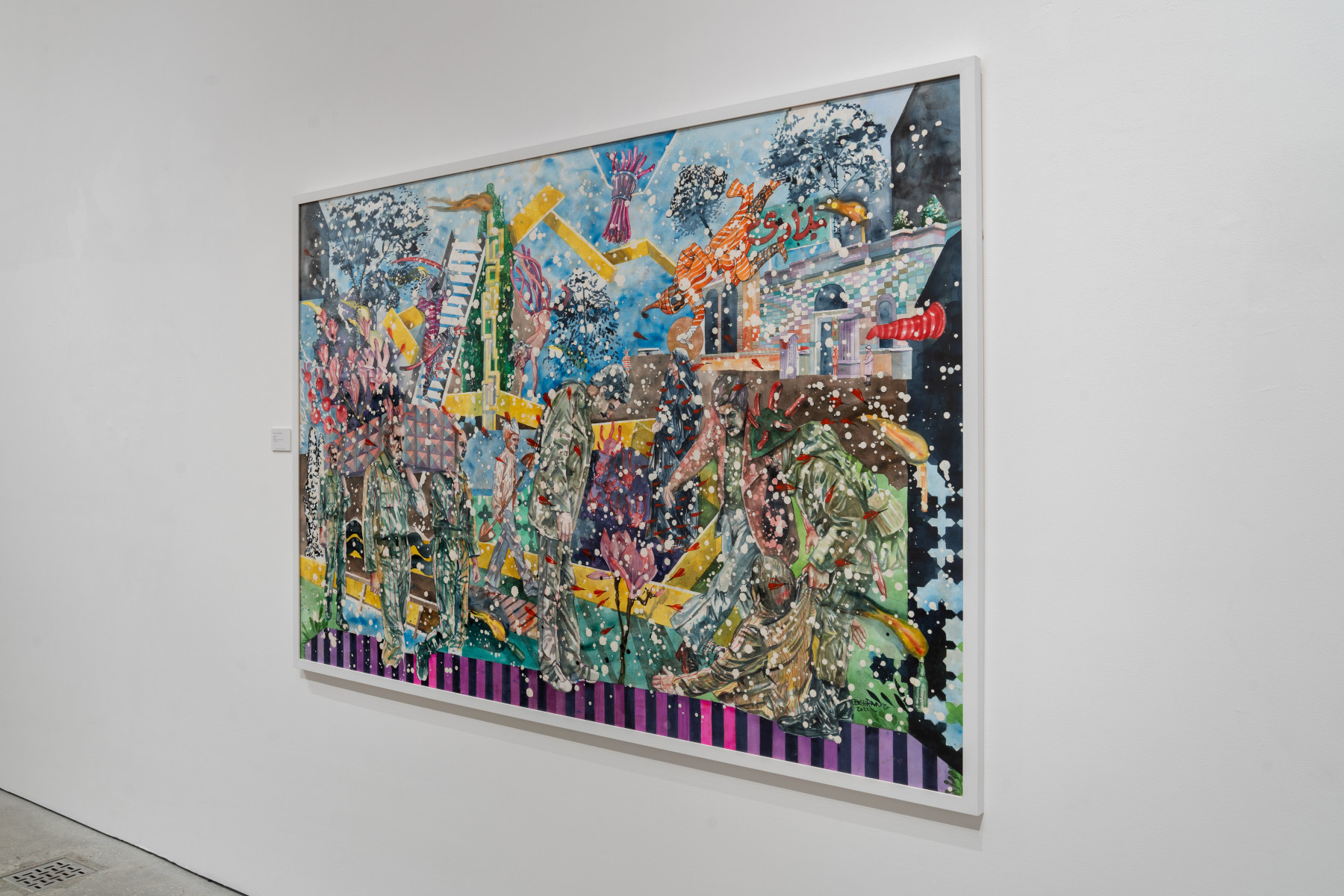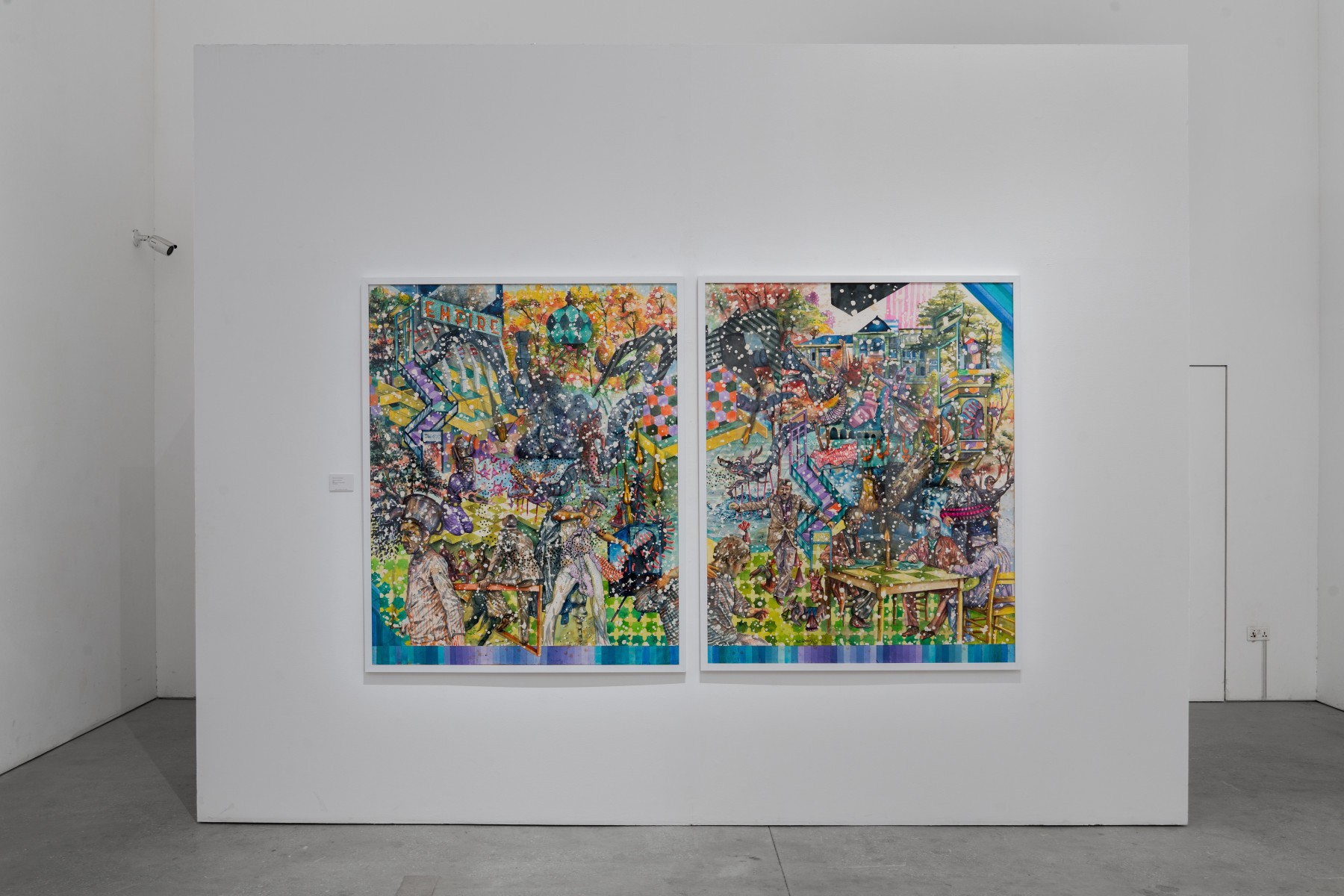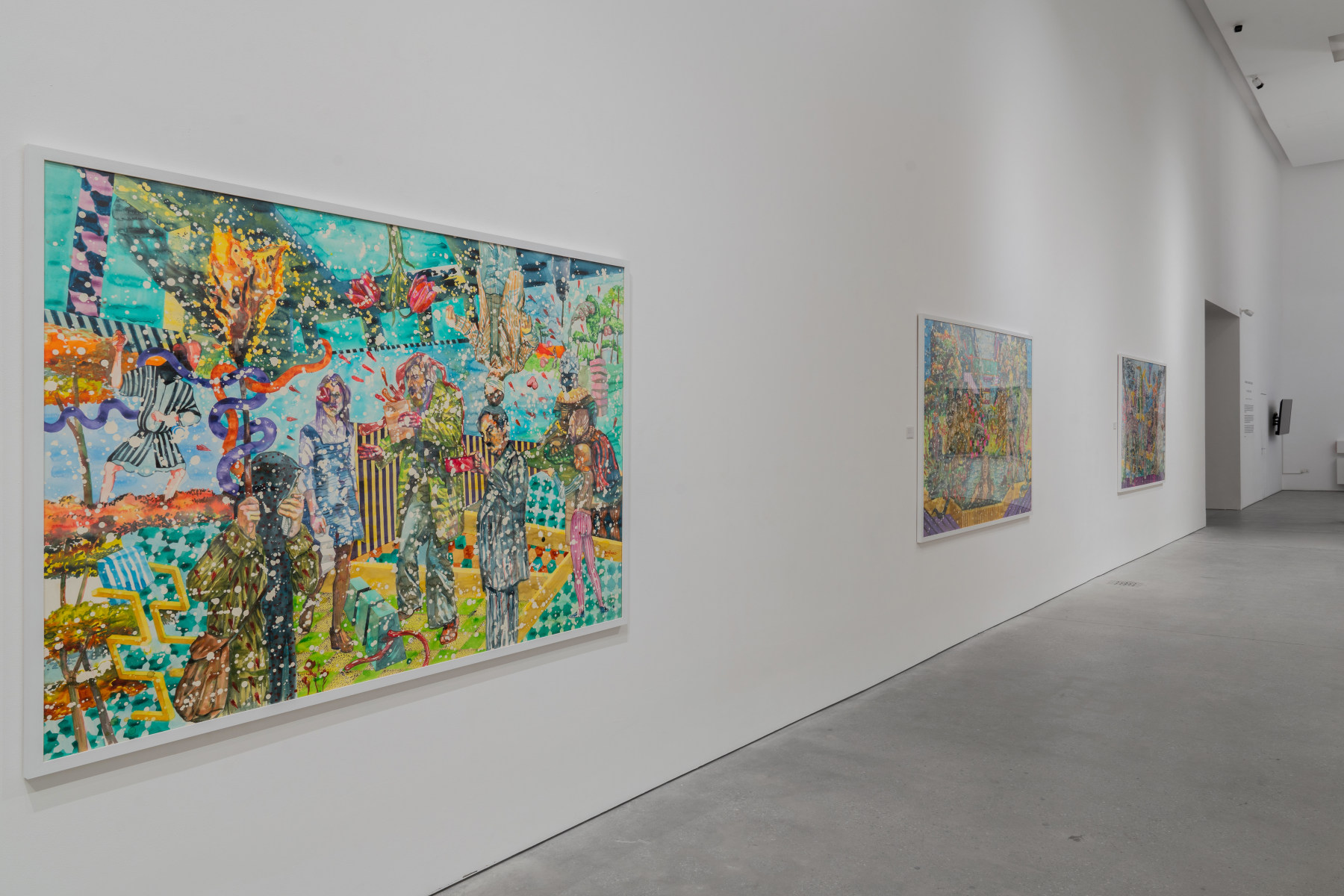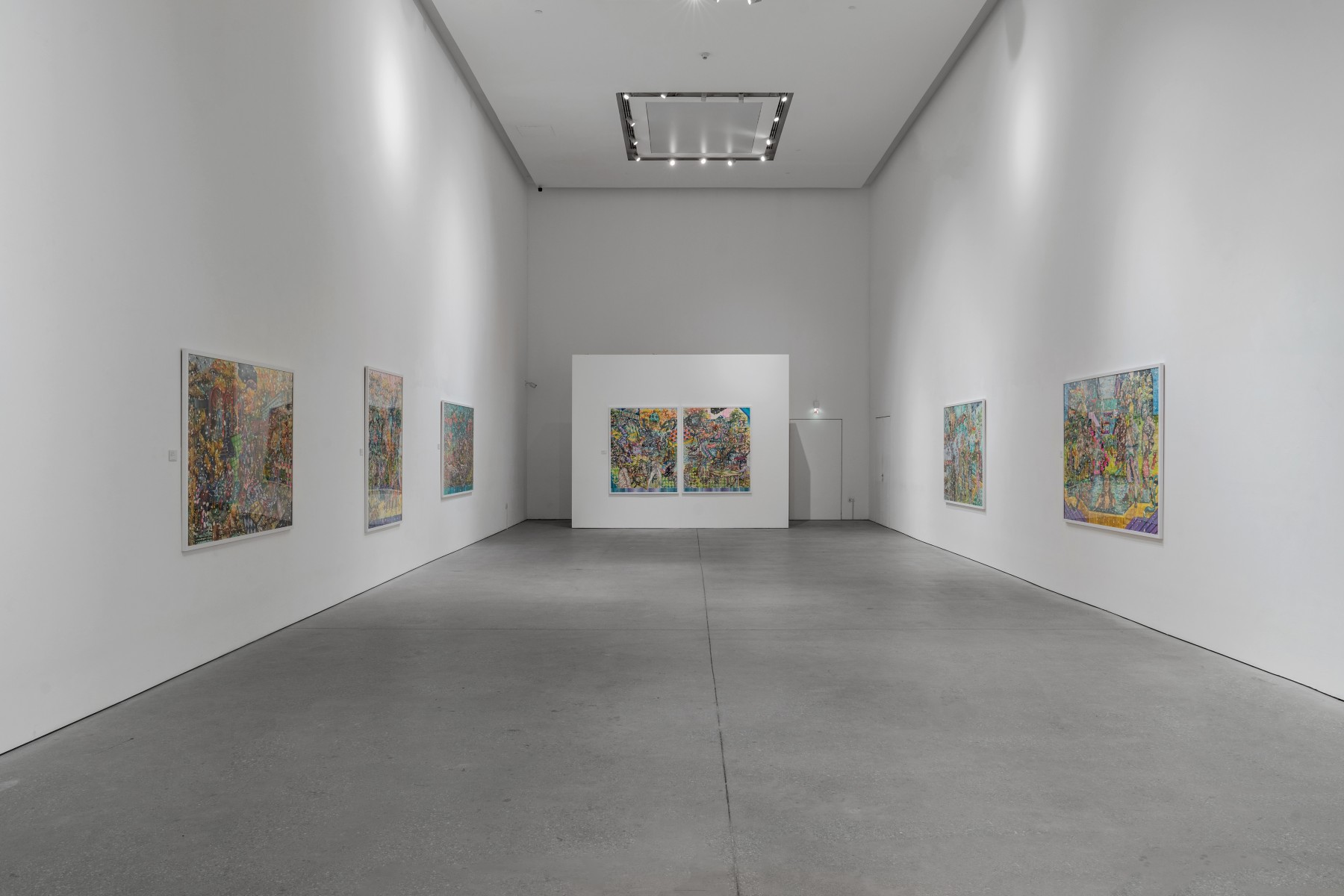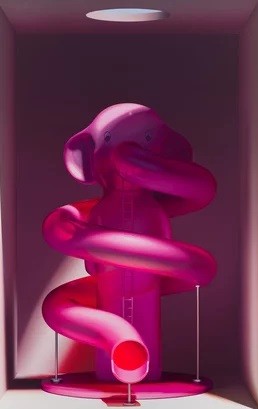New York,
No. 568 | West 25th Street | New York | NY 10001
18 January 2023 - 25 February 2023
Born and raised in a country where becoming engrossed with socio-political history is an inevitable burden upon birth, it was only natural for Behrang Samadzadegan to be immersed in the relationship between socio-political history and art for the past decade. He has set out to work by painting the recent past he had not experienced first hand. Behrang tried to “imagine and recreate this history by painting its ambiguous and veiled aspects.” Later, he concluded, “at some point, history becomes a subjective incident for the artist in which fantasy and aesthetics play a more prominent role than historical truth.” Is a direct relationship between art and history even plausible? Or does the artist, similar to a historian, distort history? He decided that his work exploring the history and then translating it into the language of painting amounted to an unedited and distorted rendition of history, which again is not based on a historical testimony.
Subsequently, the exhibition is titled ‘The Missing Witness’. Painting has always had an intrinsic correlation with the recording of historical events; however, even if art claims it attests to history, it is not an eyewitness. Instead, it depicts history by relying on subjectivity, making the result unedited and distorted. Behrang began painting large watercolors ten years ago to experience a more physical and intimate relationship with painting. Later, watercolors served as a metaphor for the movements in history. As he explains, “similar to any revolution or political movement in history, the painter may foresee the final desired outcome, but accidents and mistakes can deviate the artist from his original path. After every mistake, he is coerced to advance in the direction of the consequences following that error. For this reason, water color equates to history as it moves forward with predictions and swerves its course with every irreversible mistake that, comparable to history, cannot be erased, whitened, or reset. Thus, the works of ‘The Missing Witness’ collection are not concerned with reconstruction and representation, rather they are pursuing the historical progress created with water color resulting in anunedited and distorted history.”
With intricately interwoven narratives, Behrang’s work draws a clear connection to the tradition of Iranian painting (or what is more commonly known as Persian Miniature Painting). With colorful margins and forms diverging from them, and the way his subject matter carries a trace of history while refusing devotion to historical facts, he devises vertical compositions inspired by a combination of the seventeenth to nineteenth century Western art and Iranian art, Behrang continuously pays homage to the tradition of Iranian painting. Like Iranian miniaturists of the past, the artist does not shy away from dipping his brush in bright colors. That being said, the color palette seems to, first and foremost, be a playground for the artist to amuse himself by whimsically exploring an array of colors.
Subsequently, the exhibition is titled ‘The Missing Witness’. Painting has always had an intrinsic correlation with the recording of historical events; however, even if art claims it attests to history, it is not an eyewitness. Instead, it depicts history by relying on subjectivity, making the result unedited and distorted. Behrang began painting large watercolors ten years ago to experience a more physical and intimate relationship with painting. Later, watercolors served as a metaphor for the movements in history. As he explains, “similar to any revolution or political movement in history, the painter may foresee the final desired outcome, but accidents and mistakes can deviate the artist from his original path. After every mistake, he is coerced to advance in the direction of the consequences following that error. For this reason, water color equates to history as it moves forward with predictions and swerves its course with every irreversible mistake that, comparable to history, cannot be erased, whitened, or reset. Thus, the works of ‘The Missing Witness’ collection are not concerned with reconstruction and representation, rather they are pursuing the historical progress created with water color resulting in anunedited and distorted history.”
With intricately interwoven narratives, Behrang’s work draws a clear connection to the tradition of Iranian painting (or what is more commonly known as Persian Miniature Painting). With colorful margins and forms diverging from them, and the way his subject matter carries a trace of history while refusing devotion to historical facts, he devises vertical compositions inspired by a combination of the seventeenth to nineteenth century Western art and Iranian art, Behrang continuously pays homage to the tradition of Iranian painting. Like Iranian miniaturists of the past, the artist does not shy away from dipping his brush in bright colors. That being said, the color palette seems to, first and foremost, be a playground for the artist to amuse himself by whimsically exploring an array of colors.
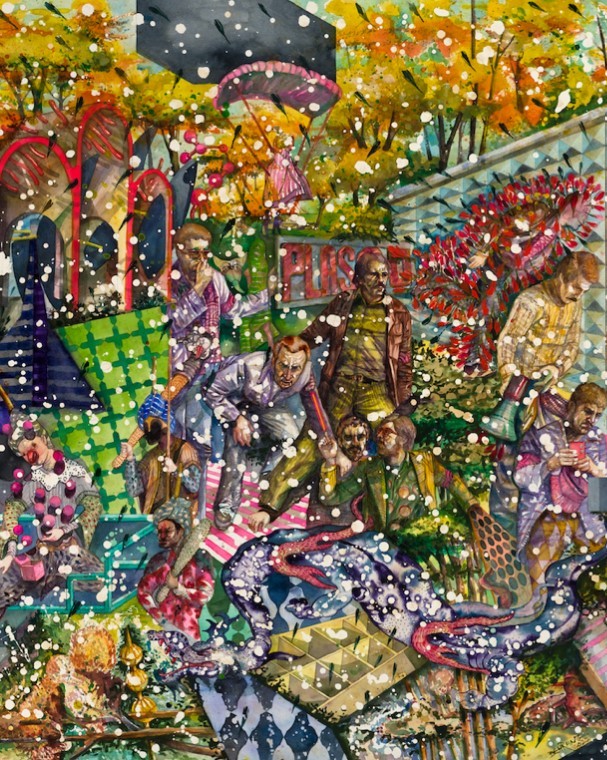
Artists
Available Nearby Exhibitions
The Sacred Circus - Suspended Myths
New York
7 November 2025 - 19 December 2025
